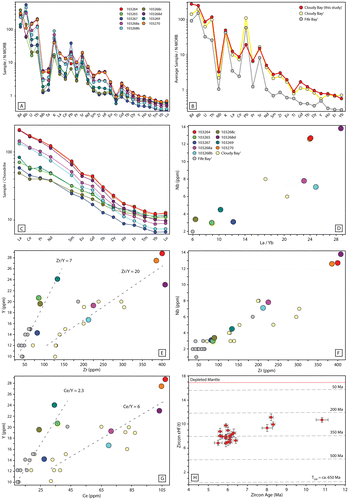Figures & data
Figure 1. Topography, bathymetry, and major tectonic boundaries of southeast Papua New Guinea and the Papuan Peninsula region. (A) tectonic elements of the southeast Papua New Guinea region (modified from Holm et al., Citation2016); NBT, New Britain trench; NGMB, New Guinea Mobile Belt; TT, Trobriand trough. Topography and bathymetry after Amante and Eakins (Citation2009). (B) landscape morphology of the Cloudy Bay area and position of the sample site in the lowland rainforest. (C) Miocene to Quaternary volcanic and intrusive rocks of southeast Papua New Guinea (modified from Australian BMR, Australian Bureau of Mineral Resources, Citation1972; Smith & Milsom, Citation1984). Inset shows location of B).
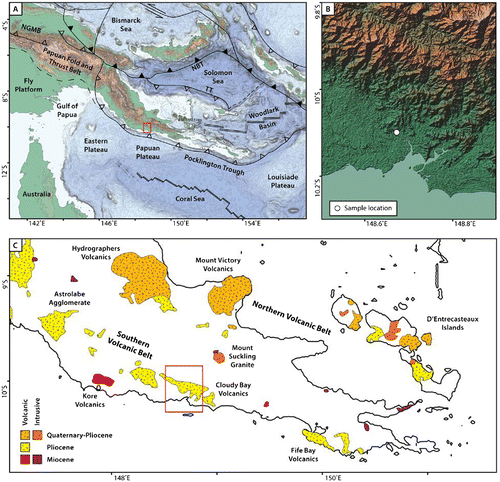
Figure 2. Conglomerate outcrop from which samples were collected for this study. Outcrop location is shown in inset of Figure 1. Lens cap used for scale in lower center of the photograph is 46 mm diameter.
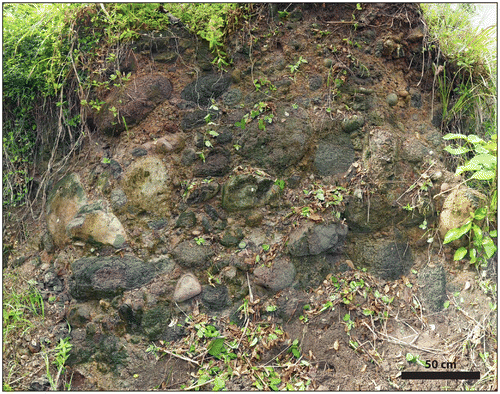
Figure 3. Petrographic mosaic photographs for selected samples used in this study (additional samples are included in the supplementary material). For each sample, the image on the left is observed under plane-polarized light, and the right under cross-polarized light. See Table for sample descriptions.
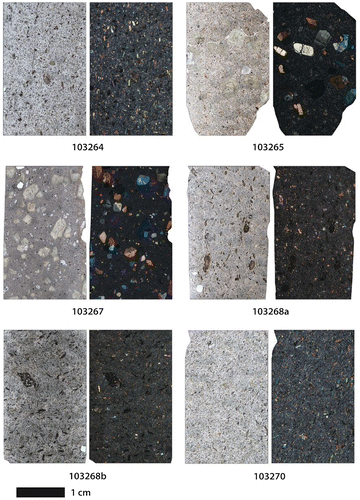
Table 1. Sample descriptions
Figure 4. Cathodoluminescence for all concordant zircon grains, and grains interpreted to belong to concordant igneous populations in this study. Grains are arranged by sample and interpreted age to illustrate distribution of zircon ages and grain morphology.

Table 2. Zircon U–Pb geochronology results
Table 3. Representative major and trace element data
Figure 6. (A) Total alkali versus silica classification diagram (TAS; Le Maitre, Citation2002) with alkaline–subalkaline curve of Irvine and Baragar (Citation1971), and (B) K2O vs. SiO2 diagram of Peccerillo and Taylor (Citation1976). Additional data from previous analyses of the Cloudy Bay Volcanics, Fife Bay Volcanics, and the Northern Volcanic Belt is from 1Smith (Citation1976) and 2Smith (Citation1982). Data is normalized and plotted on a volatile-free basis.

Figure 7 Major element variation diagrams. Additional data from previous analyses of the Cloudy Bay Volcanics, Fife Bay Volcanics, and the Northern Volcanic Belt is from 1Smith (Citation1976) and 2Smith (Citation1982). Data are normalized and plotted on a volatile-free basis.
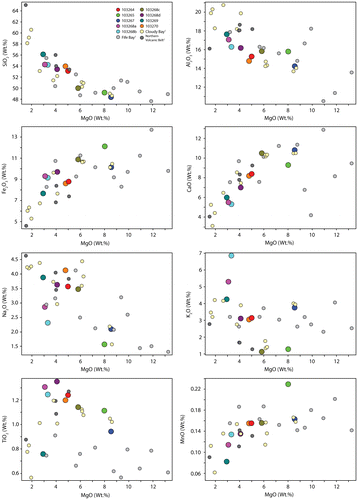
Figure 8. (A) N-MORB normalized multi-element plot; (B) N-MORB normalized multi-element plot for average compositions for samples from this study, and previous analyses from Cloudy Bay and Fife Bay (1Smith, Citation1976); (C) C1 chondrite normalized REE plots for the Cloudy Bay Volcanics. N-MORB and C1 chondrite normalizations are from Sun and McDonough (Citation1989). (D)–(G) Trace element X–Y scatter plots, and (H) Zircon εHf (t) values for zircons of the Cloudy Bay Volcanics; crosses are 1σ errors.
